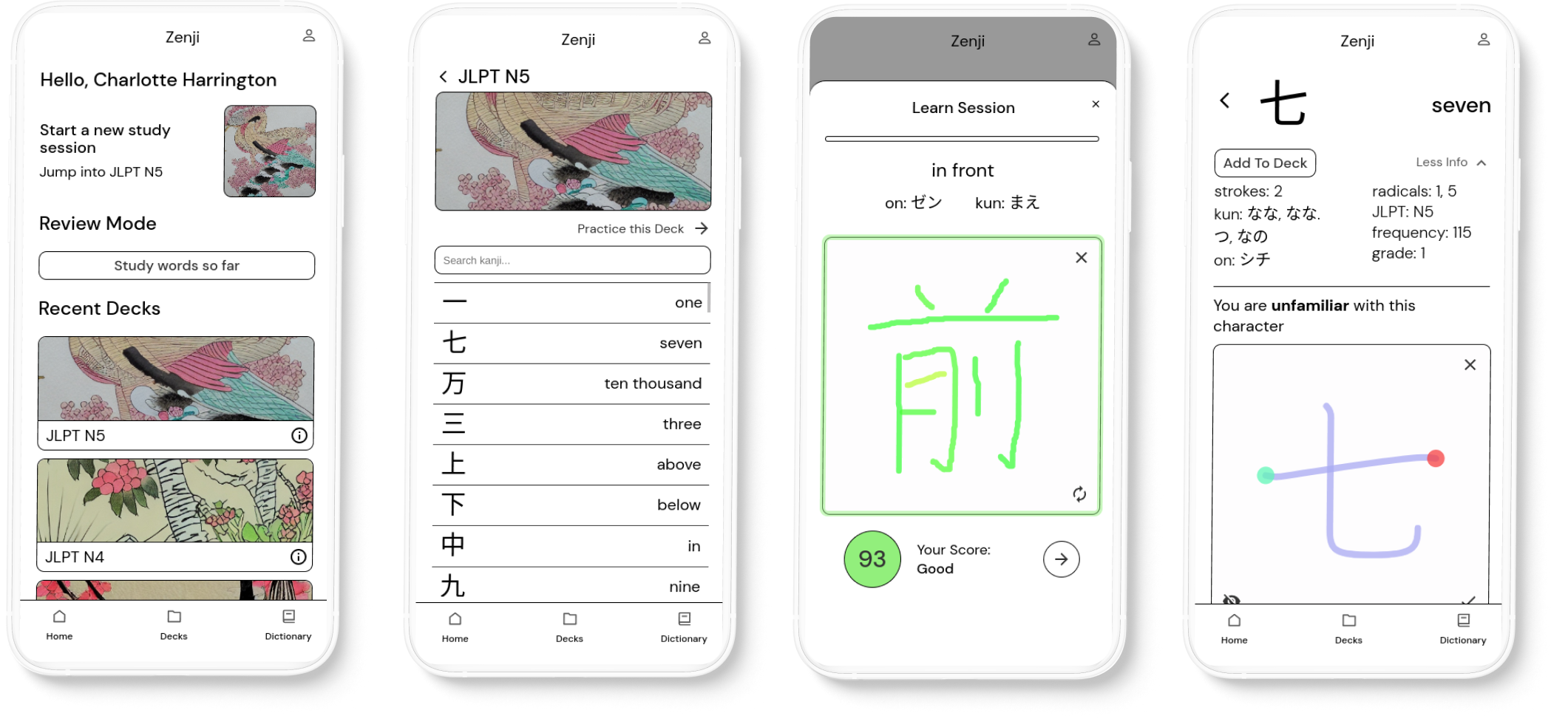Zenji
Live SiteProblem:
Writing kanji is a huge hurdle for any Japanese learner. While there are many apps for learning Japanese vocabulary or grammar, few offer feedback on handwriting, and existing solutions were too simplistic or lacked the real-time feedback necessary for meaningful progress.
Solution:

With Zenji, my team aims to capture a classroom experience in a lightweight, accessible mobile application. Using custom heuristics and machine learning, we provide users with per-stroke feedback on their writing. Users can practice individual characters or use our spaced repetition algorithm to learn new kanji at their own pace.
Technical Approach
With a small team and 3 months to complete the project, we opted to build Zenji as a Progressive Web App (PWA), with a React frontend and Firebase serverless backend. This allowed us to support both Android and iOS platforms with a single codebase, as well as ensuring smooth offline functionality.
My Contributions
> As the lead front-end developer, I designed the UI/UX of the app using Figma, creating detailed wireframes and user flows. I then translated those designs into the working application, focusing on making the user interface intuitive and user-friendly.
> Additionally, I handled a significant portion of the backend, including database design and implementing pagination for dictionary searches and character lists. This improvement drastically reduced loading times, making the app faster and more responsive.
> One of the key features I worked on was the offline functionality. Using service workers, I enabled full offline use of the app after the initial load, allowing users to continue their practice without an internet connection. Upon reconnecting, all progress was synchronized seamlessly with the server, ensuring a smooth user experience.
Impact
Zenji received positive feedback from users during testing, particularly from Japanese learners at Texas A&M University. The app not only provided an engaging and convenient way for students to practice kanji but also addressed the lack of immediate, actionable feedback on handwriting that many learners struggle with.
